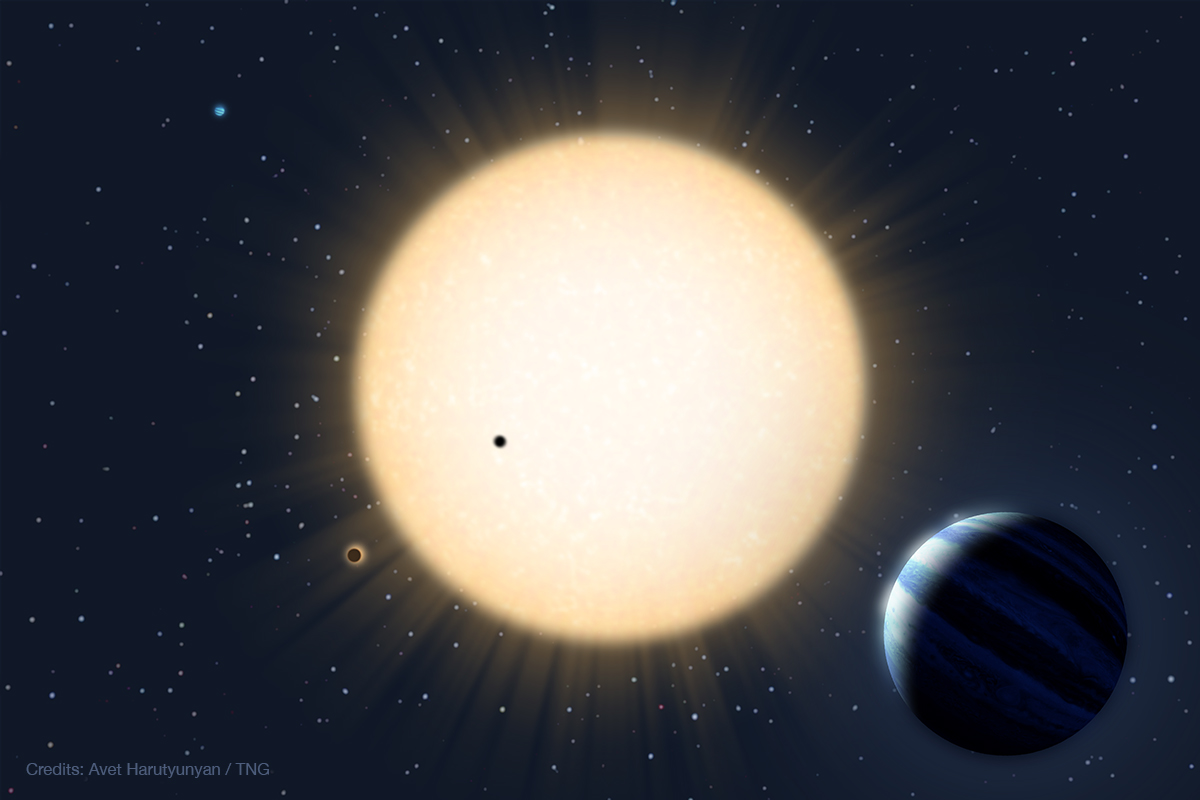HD219134, Harps-N discovers a rocky planet at only 20 light years from us
The constellation of Cassiopea is clearly visible in the sky of the Northern Hemisphere for almost the whole year. It can be recognized by its W shaped pattern of the 5 bright stars, but another star, modest but still visible to the naked eye, has just revealed its secret. Its name is just a catalogue entry: HD219134, but now has come under the spotlight.
Astronomers have now teased out that secret: a planet in a 3-day orbit that transits, or crosses in front of its star, which is just 21 light-years from us. “It is by far the closest transiting planet to Earth, which makes it ideal for follow-up studies on its atmosphere”, explains Giusi Micela of the INAF-Osservatorio Astrofisico di Palermo and member of the international team which obtained this result, now in press in Astronomy & Astrophysics, under the lead name of Ati Motalebi, a researcher of the Observatoire de Geneve (CH).
The star is a K-type dwarf, which is just a little bit smaller and cooler than our Sun. And it is extremely close to us! “The planet is a discovery made with our TNG telescope”, declares Emilio Molinari (TNG director), “in the framework of the search of rocky planets which we are pursuing with the best ground based planet hunter, the spectrograph HARPS-N, mounted on our telescope. This result is really exciting, for us and also for the whole INAF, which invested a lot of resources for the exoplanet research.”
The new planet, called HD219134b, has been just discovered using HARPS-N, an instrument placed at the TNG by a consortium composed by the INAF, the Observatoire de Geneve, some UK Universities and the Harvard-Smithsonian CfA (USA). The instrument is able to measure the radial velocity of the host star, and to track down the tiny wobbles the orbiting planet is superimposing due to their mutual gravitational interaction. Thus it is possible to measure the mass, in this case 4.5 times the Earth, what astronomers call Superearth. Not happy with this result, the team proposed and obtained observations of the transit of the planet in front of its star: this would give the diameter, and from diameter we get volumes, and together with the mass the density, verifying if the planet is rocky like Earth or gaseous like Jupiter. The transit was observed using a space borne telescope: Spitzer, operated by NASA, which observe in the infrared light. The result was that HD219134b is just 1.6 time bigger than Earth, and with a density of 6 g/cm3 the rocky composition was confirmed: the new planet is a Superearth.
But wait, there’s more! The team detected three additional planets in the system using radial velocity data. A planet weighing at least 2.7 times Earth orbits the star once every 6.8 days. A Neptune-like planet with 9 times the mass of Earth circles in a 47-day orbit. And much further out, a hefty fourth world 62 times Earth’s mass orbits at a distance of 2.1 astronomical units with a “year” of 1,190 days. Any of these planets might also transit the star, so the team plans to search for additional transits in the months ahead. “The inner part of this solar system is confirming the results already obtained, we are finding finally some feature common to all planetary systems” comments Alessandro Sozzetti (INAF- OA Torino). “Unprecedented result! This is the rocky planet closest to Earth, very similar to our planet. The perfect scenario for a SF movie” thinks Giampaolo Piotto (Padova University) , also member of the team which made this discovery. He adds that “even if the surface temperature is hostile to life, it is now clear that we are approaching the moment when we will discover a Earth twin. I am sure that, in a dozen years, with the help of the next ESA satellite PLATO we will find it”.

Artits's impression of HD 219134 system.

The TNG at the Roque de los Muchachos Observatory.

